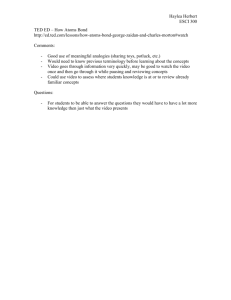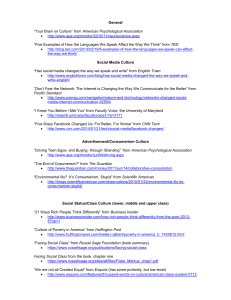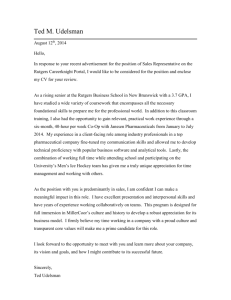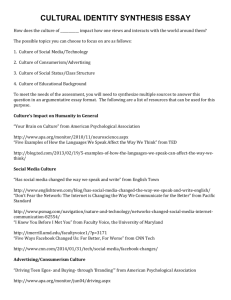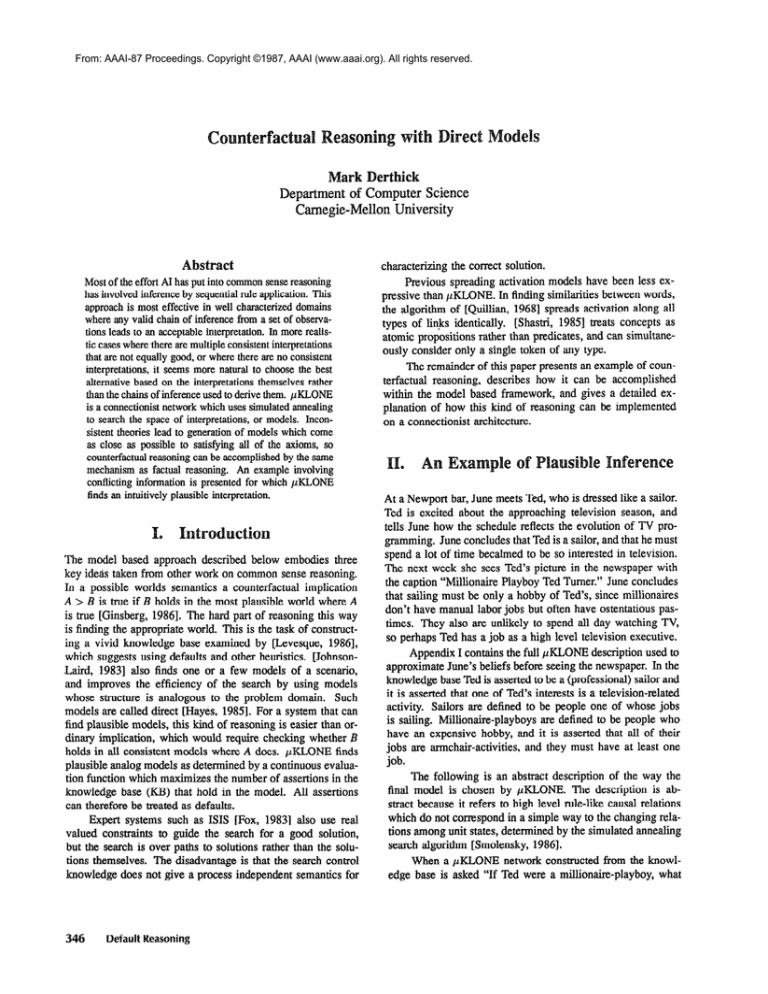
From: AAAI-87 Proceedings. Copyright ©1987, AAAI (www.aaai.org). All rights reserved.
Department of Computer Science
Carnegie-Mellon University
Abstract
Most of the effort AI has put into common sense reasoning
has involved inference by sequential rule application. This
approach is most effective in well characterized domains
where any valid chain of inference from a set of observations leads to an acceptable interpretation. In more realistic cases where there are multiple consistent interpretations
that are not equally good, or where there are no consistent
interpretations, it seems more natural to choose the best
alternative based on the interpretations themselves rather
than the chains of inference used to derive them. ,uKLOIVIZ
is a connectionist network which uses simulated annealing
to search the space of interpretations, or models. Inconsistent theories lead to generation of models which come
as close as possible to satisfying all of the axioms, so
counter-factual reasoning can be accomplished by the same
mechanism as factual reasoning. An example involving
conflicting information is presented for which @CLONE
finds an intuitively plausible interpretation.
The model based approach described below embodies three
key ideas taken from other work on common sense reasoning.
In a possible worlds semantics a counterfactual
implication
A > B is true if B holds in the most plausible world where A
is true [Ginsberg, 19861. The hard part of reasoning this way
is finding the appropriate world. This is the task of constructing a vivid knowledge base examined by &evesque,
19861,
which suggests using &faults and other heuristics. [Johnson.Laird, 19831 also finds one or a few models of a scenario,
and improves the efficiency of the search by using models
whose structure is analogous to the problem domain. Such
models are called direct [Hayes, 19851. For a system that can
find plausible models, this kind of reasoning is easier than ordinary implication, which would require checking whether B
holds in all consistent models where A does. pICLONE finds
plausible analog models as determined by a continuous evaluation function which maximizes the number of assertions in the
knowledge base (MB) that hold in the model. All assertions
can therefore be treated as defaults.
Expert systems such as ISIS [Fox, 19831 also use real
valued constraints to guide the search for a good solution,
but the search is over paths to solutions rather than the solutions themselves.
The disadvantage is that the search control
knowledge does not give a process independent semantics for
346
Default Reasoning
characterizing
the correct solution.
Previous spreading activation models have been less expressive than @CLONE. In finding similarities between words,
the algorithm of [Quillian, 19681 spreads activation along all
types of links identically.
[Shastri, 19851 treats concepts as
atomic propositions rather than predicates, and can simultaneously consider only a single token of any type.
The remainder of this paper presents an example of counterfactual reasoning, describes how it can be accomplished
within the model based framework, and gives a detailed explanation of how this kind of reasoning can be implemented
on a connectionist architecture.
0
e
e
At a Newport bar, June meets Ted, who is dressed like a sailor.
Ted is excited about the approaching television season, and
tells June how the schedule reflects the evolution of TV programming. June concludes that Ted is a sailor, and that he must
spend a lot of time becalmed to be so interested in television.
The next week she sees Ted’s picture in the newspaper with
the caption “lvlillionaire Playboy Ted Turner.” June concludes
that sailing must be only a hobby of Ted’s, since millionaires
don’t have manual labor jobs but often have ostentatious pastimes. They also are unlikely to spend all day watching TV,
so perhaps Ted has a job as a high level television executive.
Appendix I contains the full @LONE description used to
approximate June’s beliefs before seeing the newspaper. In the
knowledge base Ted is asserted to be a (professional) sailor and
it is asserted that one of Ted’s interests is a television-related
activity. Sailors are defined to be people one of whose jobs
is sailing. Millionaire-playboys
are defined to be people who
have an expensive hobby, and it is asserted that all of their
jobs are armchair-activities,
and they must have at least one
job.
The following is an abstract description of the way the
final model is chosen by @LONE.
The description is abstract because it refers to high level rule-like causal relations
which do plot correspond in a simple way to the changing relations among unit states, determined by the simulated annealing
search algorithm [Smolensky, 19861.
When a pICLONE network constructed from the knowledge base is asked “If Ted were a millionaire-playboy,
what
would his job and hobby be?“’ the system must try to reconcile being a millionaire-playboy
with its previous knowledge
about Ted, that he is a sailor and is interested in TV. The
counter-factual premise conflicts with the knowledge base because sailing is a vigorous-activity,
and the jobs of millionaireplayboys must be armchair-activities.
The initial impact of this
conflict on the selection of a model is that sailing is likely to
still be one of Ted’s interests, but perhaps not his job. Since
millionaire-playboys
must have expensive hobbies and only
two activities known to require expensive equipment are in
the MB, flying and sailing are the most likely candidates. Sailing is chosen because it is already thought to be an interest.
The plausible substitution that sailing is Ted’s job rather than
his hobby is made because HAS-JOB and HAS-HOBBY are both
subsumed by HAS-INTEREST, making it is relatively easy to slip
between them.
Millionaire-playboys
must have a job that is an armchair activity and a profitable activity.
Both TV-networkmanagement and Corporate-Raiding
fit this category, but the
former is chosen because it is known that Ted is interested
in television.
TV-acting is rejected because it is not an
armchair-activity,
and TV-watching is rejected because it is
not a profitable-activity.
If the knowledge base did not specify that millionaireplayboys had expensive hobbies, the bias towards having sailing as an interest would not be sufficient for its being picked
out as a hobby. Similarly, if millionaire-playboys
did not have
to have jobs none would be picked out. And if the query had
been simply “What are Ted’s job and hobby?’ no contradictory information would have been introduced.
The answer,
that sailing is Ted’s job and he has no hobbies, would be constructed from knowledge in the KB alone.
PKLONE answers wh- questions of the form A > B(x). A is
a set of propositions and B(x) is a set of proposition templates
in which either predicate symbols or individual constants are
left out, to be filled in by the system. The system searches
for the most plausible model in which A holds, and answers
by filling in the missing predicates and individuals in B(x).
Since the response is filling in rather than assenting, the yes/no
questions of [Ginsberg, 19861 must be recast into wh- form:
‘“If Ted were a millionaire-playboy,
what would his job be?”
rather than ‘“If Ted were a millionaire-playboy,
would he be a
sailor?’
,&LONE
is able to make very fine grained distinction
tween models because the definitions and assertions in
the
are decomposed into many constraints among microfeatures [Hinton, 19811. Axioms which mention defined predicates are expanded by replacing the predicate with its definition, and all axioms with conjunctions on the right hand side
are broken up into multiple axioms. For instance, the similarity
of HAS-JOB and HAS-HOBBY necessary for answering the exam-
1,LXLQIWE
uses a formal query language,butEnglishparaphrasesare used
in this paper. The formal version of this query is given in AppendixI.
ple query is evidenced in the micro-features they both excite:
<domain animal>, <range activity> and primitive class hasinterest>. In addition, HAS-JOB has the micro-features <range
proJitable-activity>
and <primitive class has-job> while HASHOBBY has the micro-feature
qkmitive elms has-hobby>.
Because defined concepts are expanded out before the
connectionist
network is built, definitional knowledge is not
represented explicitly. Instead, it is represented directly, in the
relationships between patterns. Direct representations
[Hayes,
19851 have properties isomorphic to formal properties of the
entities they represent. PICLONE directly represents explicitly
defined subsumption relations among both concepts and roles,
and subset relations among sets of role fillers (see section IV
I%.). Thus it is impossible for a @LONE network to represent
that, for instance, Ted is a MILLIONAIRE-PLAYBOY but not a
PERSON. In addition to making definitions (as distinct from
assertions) non-defeasible,
it improves the efficiency of the
system because certain contradictory models are eliminated
from the search space.
The query language is highly constrained in that all predicates in both the premise and the consequent must be about
the. same individual (Ted in the example). This way inhibition
can be hard-wired between, for instance, the value restriction
that all jobs be armchair activities, that sailing is a job, and
that sailing is a vigorous activity. This would be inappropriate if the restriction applied to one individual, but another
was the sailor. &u-d-wiring units to enforce very specific constraints produces a simple network topology, maximizes the
independence
of the units, and increases the effectiveness of
parallelism.
The constraints implement the model evaluation function,
and are of two main types: each axiom has some associated
cost for violation; and there is a penalty for including tuples in
the extension of a predicate. Each axiom or tuple contributes
additively to the evaluation function independently
of which
other axioms hold. Using this cost function, I.LKLONE’S simulated annealing search algorithm generally finds a good approximate solution early, which it then refines. In simulated
annealing, all constraints are continually considered and contribute in accordance with their strength. The importance of
satisfying constraints of any given strength is gradually raised.
This way, more important constraints are generally satisfied
first, except when contradicted by a number of less important
ones.
An advantage of the annealing search is that models are
not evaluated entirely in isolation.
At a given moment, the
state of the system may represent a superposition of models.
To the extent that two models overlap, they reinforce one another, so that models incorporating propositions which hold
in the greatest number of competing interpretations are preferred. Even if the “wrong” model is chosen, this maximizes
the probability that individual beliefs are correct. This heuristic
is necessary for correctly answering the example query. Models in which flying is Ted’s interest are evaluated as plausible
only when this is necessary to fulfill the hobby requirement of
playboys. There are two groups of plausible models in which
Ted’s interest is sailing: those in which it fulfills the hobby
Detihick
347
requirement of playboys and those in which it fulfills the job
requirement of sailors. Therefore, more minimal models in
which sailing is Ted’s interest are plausible. This biases the
evaluation toward Ted’s hobby being sailing. Unfortunately
there is no process independent semantics to model the effect
of this heuristic.
11
A.
System Implementation
Architecture
A $CLONE KB is compiled into a connectionist network of
very simple processors. Each processor has an graded activity
level in [0, l] which it asynchronously
updates based on the
activity levels of its neighbors. Vectors of activity levels have
meaningful interpretations in terms of concepts, roles, and individuals. The architecture of the network supports direct representations of an individual and a set of other individuals to
which it is related, together with the relations involved. There
are five important modules: The subject module represents
the individual the query is about; the subject-type module
represents the subject’s type, which is a concept; the rolefillers module represents the set of individual/role pairs for
all individuals directly related to the subject; the role-fillertype-restrictions module represents the set of value restrictions imposed on role fillers by the concept represented in the
subject-type module; the role-filler-types module represents
the type of each individual in the role-fillers module, whether
or not it is currently filling any roles. The communication pathways between modules are shown in figure 1. The constraints
among the role-filler-types, role-fillers, and role-filler-typerestrictions modules are too complex to be captured directly
with pairwise links, so there is another module to mediate
the interaction.2
There are also modules which do not participate in the direct representation,
but serve only for input
and output. The shape of the modules in figure 1 is a clue to
what is represented:
the modules with a single row of units
represent a single entity, either a concept in the subject-type
module, or an individual in the subject module. The modules with multiple rows represent a set of pairs of entities:
the role-fillers module represents sets of individual/role pairs;
the role-filler-type-restrictions module represents sets of concept/role pairs; the role-filler-types module represents sets of
individual/concept
pairs.
B.
Representations
Sets of Individuals
Each individual maps to a unique bit
in patterns representing sets of individuals.
For the example
domain there are seven individuals, so the patterns have seven
bits. Set containment, an important relation in PKLONE, is
represented directly. In figure 2 it is evident that {TV-Watching
Flying Sailing} contains {TV-Watching Flying} because the
pattern for the former contains that for the latter.
21 plan to use a more powerfulconnectionistmodel in the future which
will not requirethis module.
348
Default Reasoning
1
SUBJECT-TYPE
C----ISUEUECTI
Role micro-features
domain ACTIVITY
domain ANIMAL
range INANIMATE-OBJECT
range PROFITABLE-ACTIVITY
range ACTIVITY
range EXPENSIVE-ACTIVITY
range EXPENSIVE-ITEM
range TV-RELATED-ACTIVITY
rimitive class HAS-HOBBY
prim P tive class HAS-EQUIPMENT
primitive class HAS-JOB
primitive class HAS-INTEREST
Individuals
Ted
ROLE-FILLERRESTRICTIONS
,
/
,
Figure 1: pKLONE has five important modules. Those modules
which directly constrain one another are connected. The meaning
of each unit can be deduced from the printed descriptions. For the
subject and subject-type modules, the meaning is the description
above the unit. For the other modules, the meaning involves the
conjunction of the descriptions in the unit’s row and column. For
instance, the top left unit in the role-fillers module means that Ted is
filling a role whose domain is ACTIVITY.
Roles
The KB is examined to find all the properties which
are either used to define a role or asserted to be true of one.
Each role corresponds to a subset of these properties, or microfeatures. Role patterns have one bit for each micro-feature.
For the example domain there are 12 role micro-features,
among which are <range inanimate-object> and <primitive
class has-interest>.
For roles, the relation of subsumption is directly represented as the relation of set containment of patterns. For example, the pattern representing the role HAS-HOBBY is the set
of micro-features
{<primitive class has-hobby>) while HASEXPENSIVE-HOBBY has the micro-features
{<primitive class
has-hobby> <range expensive-activity>).
HAS-HOBBY subsumes HAS-EXPENSIVE-HOBBY, and its pattern is contained by
the pattern for HAS-EXPENSIVE-HOBBY, as illustrated in figure
2. [Hinton, 19811 originated this technique, which results in
very efficient representations.
Information relevant to a microfeature need only be attached locally to a single unit, and yet it
is used by all concepts having the property associated with the
micro-feature.
This avoids the dilemma facing conventional
semantic network implementations:
either cache information
together with each concept that needs it, requiring duplication
of information, or search up the inheritance hierarchy each
time the information is needed.
There are five types of constraints that must hold between modules (see figure l), and five more types that must hold within
modules. One illustrative constraint of each type is described
here. See [Derthick, 19871 for the complete description.
ithin
Subject-Type
odule
These constraints ensure that a coherent concept is represented.
If the
pattern for a concept is present, then the patterns for all concepts asserted to subsume it must be present, and the patterns
for all concepts asserted to be disjoint from it must be absent. This can usually be done with pairwise links among
the units in a group. For example, an inhibitory link between
the <primitive chss animal> and <primitive class activity>
micro-features
expresses that ANI~MALand ACTIVITY are disjoint. When more than one bit is required for discrimination,
extra units are created to express the constraint.
With the
more powerful connectionist architecture mentioned in section
A., these extra units will not be required.
ConstraiiTnts
Pattern
f
Figure 2: Two examples illustrating how pairs of patterns are
conjunctively coded. The first example (black) combines the two
bit pattern for {TV-Watching Flying} with the one bit pattern for
HAS-HOBBY, producing a 2x 1 bit pattern in the role-fillers module
representing the fact that {TV-Watching flying} is the set of fillers
of the HAS-HOBBY role. The second example (gray) combines the
three bit pattern for {TV-Watching Rying Sailing} with the two bit
pattern for HAS-EXPENSIVE-HOBBY, producing a six bit pattern in the
role-fillers module. Since the former value permission necessarily
follows from the latter, its two bit pattern is contained by the six bit
pattern for the latter.
Pair Representations
Figure 2 illustrates the technique used
for representing pairs of patterns.
The size of the module
required to represent a pair of entities is the product of the
pattern lengths of the two entities. To represent the pairing
AB, for each i and j the unit at coordinates i, j is turned on
if and only if the ith bit in the pattern for A is on and the
jth bit in the pattern for B is on. To store multiple pairs, the
patterns for each pair are superimposed.
This is a variation on
the technique of cuarse coding [Hinton et al., 19861.
The direct relation between subsumption and set containment of patterns carries over to the modules representing pairs
as well. Figure 2 illustrates this for the the role-fillers module. If {TV-watching Flying Sailing} is the set of fillers of the
HAS-EXPENSIVE-HOBBY
role, it automatically becomes the case
that, for example, each of {TV-watching Flying} is filling the
HAS-HOBBY role. This works because the implications of set A
filling role R involve subsets of A and subsumers of R, either
of which have patterns with fewer units on.
s, ~~le-~~l~er-Ty~e~~and
d&s
These constraints
ensure that all type restrictions on a role are satisfied by fillers
of the role, and are the most complicated part of pKLONE.
micro-feature represents the conjunction of
A ~Q~~-~~~e~~ty~es
an individual and a concept micro-feature.
The former determines the relevant column in the role-fillers module, and the
latter determines the relevant column in the role-Giller-typerestrictiom module. If the individual is filling a role at least
as specific as the one to which the value restiction
applies,
then the role-filler-types
micro-feature must come on. This
condition can be determined by first ORiag the two columns
together, and then ANDing the resulting column. If the result
is true, then the value restriction applies to this individual.
When the network building algorithm is given the KB of Appendix I, a Hopfield and Tank network [Hopfield, 19841 with
2531 units and 16,959 connections results. Empirically it was
found that an annealing schedule exponentially increasing the
gain for 500 time steps was sufficient for answering the queries
mentioned above. (One time step involves updating the state
of each unit.) This takes about ten minutes of CPU time on a
Symbolics 360.
The number of units scales as the third power of the size
of the knowledge base, and the number of links scales as the
fourth power. With the envisioned, more powerful connectionist model, this will be reduced to the second power and third
power, respectively. The only known theoretical bound on the
number of time steps in the annealing schedule required for
good performance is exponential, however if pKLONE generally produces networks with smooth energy surfaces the results
may be much better. Only two KBs have been compared to
date: a 34% increase in KB size required a 16% increase in
the annealing schedule length.
Derthick
349
cess
v.
A more detailed description of the inference process outlined
in section II. can now be given. The input/output modules excite the Ted unit in the subject module, which in turn excites
SAILOR in the subject-type module. Meanwhile, MILLIONAIREAlthough incomPLAYBOY also receives external excitation.
patible, these concepts were not explicitly made disjoint in the
KB, and so no links were built within the subject-type module
to inhibit the combination of the two patterns. In @LONE, relationships between concepts are maintained indirectly through
the effect of each on the model anyway, so there is no need to
precompute them.
The SAILOR pattern contains the <permission has-job
which excites the pattern for HASsailing> micro-feature,
JOB in the sailing column of the role-fillers module.
The
MILLIONAIRE-PLAYBOY
pattern contains micro-features
for
<minimum has-expensive-hobby I > and <restriction has-job
annchair-activity>. The latter excites a pattern in the rolefiller-type-restrictions module.
At this point, the microfeature in the role-filler-types module for <sailing is an
On the one hand, sailarmchair-activity> has a problem.
ing is known to be a VIGOROUS-A~TVITY,
so the <sailing
is a vigorous-activity> micro-feature
in the role-filler-types
module has a positive bias and is active. Since VIGOROUSand ARMCHAIR-ACTMTY
ate disjoint, the <sailing
ACTMTY
is an armchair-activity> micro-feature is inhibited.
But the
relevant columns in the role-fillers module and the role-fillertype-restrictions module indicate that sailing must indeed be
an armchair activity.
There is no way to satisfy all the constraints simultaneously. The system’s choice depends on the relative strengths
of the constraints, which are free parameters chosen by the experimenter. Logically they are part of the MB, but as of now
they are constants hidden in Lisp code. In a connectionist system these strengths can, in principle, be learned automatically.
I have adjusted the strengths of the links so the constraint from
the <permission has-job sailing> micro-feature in the subjecttype module to the “sailing is a HAS-JOB" pattern in the rolefillers module is weakest. Therefore, the pattern for has-job
in the sailing column of the role-fillers module is not sustainable. From this point, the choice of Sailing as Ted’s hobby and
TV-Network-Management
as his job result from the similarity
of their patterns, independent of any constraint strengths. The
unit that differentiates HAS-JOB from HAS-INTEREST is forced
off, but the remaining activation of the “sailing is a HASINTEXFlST" pattern leads to the eventual choice of sailing as
Ted’s hobby. Space limitations prevent a detailed description
of the selection of TV-Network-Management
as Ted’s job.
This paper introduced a novel semantics for question answering based on finding an explicit partial model which plausibly reconciles long term knowledge with situation specific
information.
The Ted Turner example demonstrates that this
method is effective for a non-trivial problem involving counter-factual reasoning. Finding a plausible model is well suited
350
Default Reasoning
to parallel constraint satisfaction using a special purpose architecture.
The structure of the solution is constant so the
models can take advantage of direct representations to reduce
the search space. Explicitly represented constraints contribute
independently to the evaluation function, so parallelism can be
used effectively with units connected heterogeneously
to enforce particular constraints.
Representing concepts and roles
as sets of micro-features
results in many more constraints in
the connectionist network than there are statements in the KB.
This, along with the continuous activation levels of units, increases the smoothness of the evaluation function so that simulated annealing is a good search technique.
Future work will examine:
knowledge bases of many
sizes to better determine
empirically how the search time
scales; learning as an alternative to setting weights by hand;
and the possibility of giving a semantics to the weights in
terms of probabilities of models.
cknowledgments
Geoff Hinton and Dave Touretzky have been very helpful with
the design of pKLONE and the preparation of this paper. Discussions with Ron Brachman resulted in a more coherent KB
language. I thank Oren Etzioni, Craig Knoblock, David Plaut,
Roni Rosenfeld, David Steier, and the anonymous referees for
providing useful comments. This research is supported by NSF
grants IST-8520359 and IST-8516330, and an ONR Graduate
Fellowship.
The following input was used by the network building algorithm to produce a Hopfield and Tank network for answering queries.
The syntax derives from that of KL2’s definition language [Vilain, 19851. Three ontological categories are
used: concepts are classes of individuals. Roles are classes of
two-place relations between individuals. DEFCONCEPT and
DEFRQLE statements normally give necessary and sufficient
conditions for determining whether an individual instantiates a
concept or whether an ordered pair of individuals instantiates
a role. Alternatively, if the language is not powerful enough
to provide sufficient conditions for recognizing membership, a
concept or role can be defined to be primitive. In this case,
the extension of the concept or role must be explicitly declared using INSTANTIATE-CONCEPT
or INSTANTIATEROLE statements.
Conditions which necessarily hold of instances of concepts or roles, but are not part of the recognition
criteria are asserted with ASSERT-CONCEPT
or ASSERTROLE statements.
(DEFCONCEPT Aniial (PIUMITIVE))
;ANIMAL is a natural kid - you can’t defiue it
(DEFCONCEPT Person (PRIMITIVE))
(ASSERT-CONCEPT
Person(SPECIALIZESAnimal))
;PERSONS always turn out to be ANIMALS
(DEFCONCEPT Millionaire-Playboy
(SPECIAIJZES
Person)
(SOME Has-Hobby Activity-Requiring-Expensive-Equipment))
;a PLAYBOY must have some HOBBY
;whichis ~~ACT~TY-REQ~JRING-EXPENSIVE-EQUIPMENT
(ASSERT-CONCEPT Millionaire-Playboy
(MIN Has-Job 1)
;a PLAYBOY must have a JOB
(RESTRICTION Has-Job Armchair-Activity))
;a PLAYBOY'sJOBs must be ARMCHAIR-ACTIVMYS
(DEFCONCEPT Sailor (SPECIALIZES Person)
(PERMISSION Has-Job Sailing))
;sailing must be one of a SAILOR'SJOBS
The query discussed
in the paper, “If Ted were a
millionaire-playboy,
what would his job and hobby be?” is
written:
((SUBJFET Ted)
(SUBJECT-TYPE IvIillionaire-Playboy)
(WITH (ROLE Has-Hobby) (FILLERS ?))
(WITH (ROLE Has-Job) (FILLERS ?)))
(DEFCONCEPT TV-Buff
(SOME Has-Interest Television-Related-Activity))
(ASSERT-CONCEPT. TV-Buff (SPECIALIZES Person))
(DEFCONCEPT Activity (PRIMITIVE))
(ASSERT-CONCEPT Activity
(DISJOINT Inanimate-Object) (DISJOINT Auimal))
(DEFCONCEPT
[Derthick, 1987-J Mark A. Derthick. A Model Based Approach
to Knowledge Representation and Reasoning. Technical
Report, CMU, Pittsburgh, PA, 1987. Forthcoming.
Activity-Requiring-Expensive-Equipment
[Fox, 19831 Mark Fox. Constraint-directed search: a case
study of job-shop scheduling. PhD thesis, CMU, 1983.
(SPECIALIZES Activity)
(SOME Has-Equipment Expensive-Item))
(DEFCONCEPT Armchair-Activity (PRIMITIVE))
(ASSERT-CONCEPT
Armchair-Activity
(SPECIALIZES
Activity))
(DEFCONCEPT Vigorous-Activity (SPECIALIZES Activity)
(DISJOINT Armchair-Activity))
(DEFCONCEPT Profitable-Activity (PRIMITIVE))
(ASSERT-CONCEPT Profitable-Activity (SPECIALIZES Activity))
(DEFCONCEPT
IJnProfitable-Activity
(DISJOINT Profitable-Activity) (SPECIALIZES Activity))
(DEFCONCEPT Television-Related-Activity (PRIMITIVE))
(ASSERT-CONCEPT Television-Related-Activity
(SPECIAL~S
Activity))
(DEFCONCEPI’ Inanimate-Object (PRIMITIVE))
(ASSERT-CONCEPT Inanimate-Object (DISJOINT Animal))
(DEFCONCEPT Expensive-Item (PRIMITIVE))
(ASSERT-CONCEPT Expensive-Item
(SPECIALIZES Inanimate-Object))
(DEFROLE Has-Interest (PRIMITIVE))
(ASSERT-ROLE Has-Interest (DOMAIN Animal)
;ody ANIMALScanhave INTERESTS
(RAN6E Activity))
;O~~ACTIVITYSC~~ be INTERESTS
(DEFROLE Has-Job (PRIMITIVE))
(ASSERT-ROLE Has-Job (SPECIALIZES Has-Interest)
(RANGE Profitable-Activity))
(DEFROLE Has-Hobby (PRIMITIVE))
(ASSERT-ROLE Has-Hobby (SPECIALIZES Has-Interest)
(DISJOINT Has-Job))
(DEFROLE Has-Equipment (PRIMHIVE))
(ASSERT-ROLE Has-Equipment (DOMAIN Activity)
(RANGE Inanimate-Object))
(INSTANTIATE-CONCEPT (Activity-RcquiringExpensive-Equipment Vigorous-Activity) Sailing)
(INSTANTIATE-CONC
Activity-Requiting-Expensive-Equipment Flying)
(INSTANTIATE-CONCEPT (Profitable-Activity Armchair-Activity)
Corporate-Raiding)
(INSTANTIATE-CONCEPT (Television-Related-Activity
Armchair-Activity UuProfitable-Activity) TV-Watching)
(INSTANTIATE-CONCEPT (Television-Related-Activity
Vigorous-Activity Profitable-Activity) TV-Acting)
(INSTANTIATE-CONCEPT (Television-Related-Activity
Armchair-Activity
Profitable-Activity)
[Ginsberg, 19861 M. Ginsberg. Counterfactuals.
telligence, 30:35-79, 1986.
Artijkial In-
[Hayes, 19851 l? J. Hayes. Some problems and non-problems
in representation theory. In Ronald J. Brachman and Hector J. Levesque, editors, Readings in Knowledge Representation, Morgan Kaufmann, 1985.
[Hi&on, 19811 G. E. Hinton.
Implementing
semantic networks in parallel hardware. In Parallel Models of Associative Memory, Erlbaum, Hillsdale, NJ, 1981.
[Hinton et al., 19861 G. E. Hinton, J. L. McClelland,
and
D. E. Rumelhart. Distributed representations.
In ParaZZeZ
distributed processing: Explorations in the microstructure of cognition., Bradford Books, Cambridge, MA,
1986.
[Hopfield, 19841 J. J. Hopfield. Neurons with graded response
have collective computational
properties like those of
two-state neurons. Proceedings of the National Academy
of Sciences U.S.A., 81:3088-x)92, May 1984.
[Johnson-Lair-d, 19831 Philip N. Johnson-Laird.
els. Harvard University Press, 1983.
Mental Mod-
[Levesque, 19861 Hector J. Levesque. Making believers out
of computers. Arti@ial Intelligence, 30:81-108, 1986.
[Quillian, 19681 M. R. Quillian.
Semantic memory.
In M.
Minsky, editor, Semantic information processing, MU
Press, Cambridge, Mass, 1968.
[Shastri, 19851 Lokendra Shastri. Evidential Reasoning in Semantic Networks: A Formal Theory and its Parallel
Implementation. PhD thesis, University of Rochester,
September 1985. Available as TR 166.
[Smolensky, 19861 P. Smolensky.
Foundations of harmony
theory: cognitive dynamical systems and the subsymbolic theory of information processing. In Parallel distributed processing: Explorations in the microstructure
of cognition, Bradford Books, Cambridge, MA, 1986.
[Vilain, 1985-j M.B. Vilain. The restricted language arshitecture of a hybrid representation system. In IJCM-85, Morgan Kaufmann, August 1985.
TV-Network-Management)
(INSTANTIATE-CONCEPT (Sailor TV-Buff) Ted)
Deathick
351

